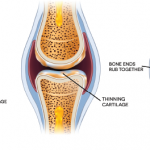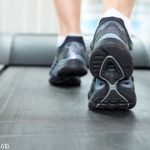New research used multidomain function assessment to better understand the physical and cognitive functioning of systemic lupus erythematosus (SLE) patients. The pilot study found a high prevalence of impairment in SLE patients, similar to or exceeding the prevalence seen in the general geriatric population. Patients scored lower for lower body strength and low average for cognitive flexibility and attention…

New Research Shows Knee Osteoarthritis Prevalence Is Rising
Studies highlighting the large numbers of people affected by knee osteoarthritis (OA) point to what clinicians who treat knee OA have been seeing for the past few decades: a substantial increase in the prevalence of knee OA in the U.S. and globally. Roughly 250 million people are affected by knee OA worldwide, and about 14…

Tips to Get Knee Replacement Patients to Increase Their Physical Activity
Although total knee replacement (TKR) surgery can improve pain and function in individuals with knee osteoarthritis (OA), many patients who are sedentary before undergoing TKR don’t increase their physical activity levels after surgery. A new study led by Elena Losina, PhD, of the Department of Orthopaedic Surgery at Brigham and Women’s Hospital in Boston, examined…

New Study Examines the Physical Activity & Joint Symptom Risk
If you’re a middle-aged woman who makes a New Year’s resolution to work out regularly and you keep that promise for only six months, don’t think that will go far in protecting your joints. Researchers in Australia have homed in on the details of the sustained physical activity required to reduce the risk of joint…

Study Finds Pedometers Reduce Fatigue in RA Patients
For people with rheumatoid arthritis (RA), fatigue can be a debilitating symptom that interferes with daily life and significantly reduces quality of life. Managing fatigue can be difficult; it is linked to disease activity and a host of other conditions that commonly accompany RA, such as depression, sleep problems and obesity. A new study, however,…

More Physical Activity Counseling Urged
New research from the CDC evaluated the prevalence of healthcare provider counseling for physical activity as a management strategy for arthritis. Researchers found that although healthcare provider counseling for exercise has increased during the past decade, 40% of patients with arthritis do not receive this counseling, resulting in a greater prevalence of physical inactivity for this patient population…

Physical Activity, Exercise Can Benefit Patients with RA
While medical advances in rheumatoid arthritis (RA) have led to improvements in disease control and quality of life for patients worldwide, the rate for stable remission remains low.1 Management of RA symptoms is traditionally accomplished through a combination of medications and nonpharmacological interventions.2 This approach can prevent the development of secondary adverse health outcomes. Two…

Fulbright Scholar Researches Physical Activity in Swedish Children with Juvenile Idiopathic Arthritis
A stroll through downtown Stockholm presents a quintessential picture of an active community, with most people biking or walking as their preferred mode of travel. Yet children in Sweden who live with juvenile idiopathic arthritis (JIA)—currently estimated at around 64 of every 100,000—don’t always engage in this active lifestyle.1 Maura Daly Iversen, PT, DPT, SD,…
Being Active May Reduce Risk of Chronic Low Back Pain
(Reuters Health)—Regularly engaging in physical activity, from walking to intense exercise, may help to reduce the risk of chronic low back pain by, as much as 16%, according to a new review of previous studies. In the past, it hasn’t been clear whether physical activity staves off low back pain, or people without back pain…

How to Leverage Physical Therapy & Technology to Help Patients Stay Fit & Decrease Pain
For patients living with rheumatic diseases, the benefits of physical therapy and exercise cannot be overstated. “Working with a physical therapist provides a chance for careful evaluation of how the patient is moving and experiencing pain,” says Maura Iversen, BSc, PT, DPT, SD, MPH…